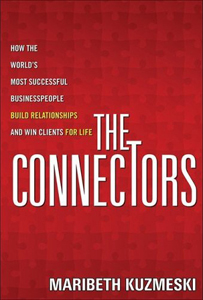 In a couple of recent entries (here and here), I discussed tricks for coming up with ideas for entries for your blog. Now let’s look at how to express them with clear, search-friendly writing.
In a couple of recent entries (here and here), I discussed tricks for coming up with ideas for entries for your blog. Now let’s look at how to express them with clear, search-friendly writing.
1. Know Your Audience
This is the most important point to get clear. Having an image of your target reader helps you craft your approach and limits wasted words. For example, if I’m writing about e-mail marketing I’ll approach the subject very differently depending on whether the audience is professional marketers or college students. IDG Chairman Patrick McGovern used to suggest that writers keep a picture of a reader on the wall to remind them that there was a person on the other end of the interaction. It’s not a bad idea. The more you think of writing as a conversation, the more clearly you get your point across.
2. Know What You Want to Say
A writing coach once advised me to “Tell people what you’re going to say, say it, then tell them what you just said.” Another used to ask his students simply, “What’s the story about?” It was amazing how many professional journalists couldn’t answer that simple question.
Drive-by blog readers have neither the time nor patience to unravel complex messages, so tell them at the top what they can expect to take away from their investing in your words. It’s a good practice to write a brief summary of the point or points you want to make and then fill in the details, keeping in mind that they should lead to the intended conclusion. How many major points should you make in a single blog entry? Instinct tells me no more than two. Beyond that you’re into an essay, which requires a different approach to writing. For the purposes of a blog, short and simple usually works best.
3. Grab the reader’s attention
If you want to see some examples of great writing, browse the archive of Pulitzer Prize winners. Nearly every article you read there begins with a statement, quote or anecdote that commands your attention. Some of the most powerful writing leads with a story, like the young newlyweds whose lives were upended by a cancer diagnosis or the 84-year-old Georgia woman who couldn’t register to vote because her birth had never been documented. Journalists call these passages “grabbers.” They’re meant to stop readers and make them want to find out more.
Business writers don’t usually have the opportunity to tell stories like these, but a grabber can simply be a statement of the unexpected, such as “Everything you’ve ever learned about marketing is useless, and here’s why.” Or if you can’t come up with something dramatic to say, simply tell people what you’re going to tell them. Try to arouse curiosity: “The Chaos Scenario is a great book, but prepare to be disturbed by what it tells you.”
It’s easy to get bogged down working on your introduction. One tactic I use is to skip the lead entirely and begin writing with the second paragraph. By the time I’m halfway done, I’ve usually thought of an idea for how to start.
4. Write Like You Speak
Not everyone is a talented writer, but nearly everyone is capable of writing clearly. Some of the worst writing is done by people who imagine themselves to be budding Hemingways. Their attempts at eloquence come off sounding tortured instead. If you’re not a gifted writer, it’s no big deal. One of the great characteristics of blogging is that it’s so personal. Start by speaking your words and then write down what you said. A great tool is Dragon Naturally Speaking, a voice recognition program that you can pick up for about $50 on eBay. I’m using it right now.
5. Use Organizational Tools
Many of my own blog entries are written just like this one: I state a theme at the top and then organize the points I want to make as subheadings or bullet points. This is basically a form of outlining that enables me to organize my thoughts logically. It doesn’t work in every case, such as when telling a story. But it’s easier to write when your thoughts are organized as a series of short messages.
Another useful tool is to write on a timeline. State the conclusion you’ve reached and then describe the process by which you arrived there. Journalists are taught to use the “inverted pyramid” style, by which information is related in order of declining importance. The inverted pyramid was invented for the days when articles were cut from the bottom and it’s less relevant than it used to be, but the simple practice of deciding what’s most important is useful for organizing your thoughts.
These are just a few ideas for getting over bloggers block. In an upcoming entry, I’ll talk about writing in the age of search. Meanwhile, please contribute your own tricks and techniques for writing clearly in the comments section below.








 The best way to sustain visibility, name recognition and search-engine love in our information-saturated world is to write a lot, particularly on a blog, which is a magnet for search engines.
The best way to sustain visibility, name recognition and search-engine love in our information-saturated world is to write a lot, particularly on a blog, which is a magnet for search engines.